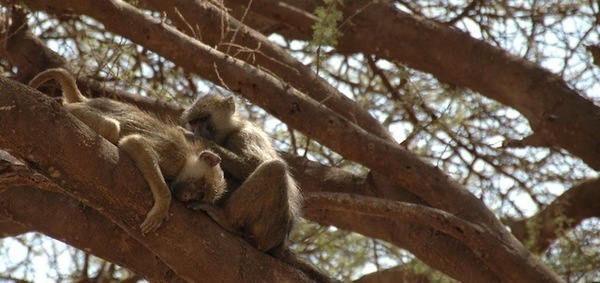Social connectedness

Mechanisms and consequences of social connectedness in a wild primate population
Studies of aging in wild animal populations, especially in our primate relatives, offer a unique set of potential benefits for understanding the processes and patterns governing human aging. The comparative perspective that animal models provide can both bring to light general principles and mechanisms that govern the aging process across species, and can highlight human-specific characteristics of aging. Additionally, in some cases datasets that are extremely difficult to gather in humans (such as fine-scaled behavioral data in natural social settings) are more readily obtainable in wild primate populations. However, despite keen interest in aging as a human health concern and the enormous progress in this area in recent decades, patterns of aging in wild animals – age-related changes not just in survival, but also in social behavior, hormone profiles, and other aspects of health and functioning – remain almost entirely undescribed. Our detailed, longitudinal data from the Amboseli baboons provides clear evidence both that senescence occurs, and that considerable variance among individuals is seen both in lifespan and in functional declines with age. Baboons live in stable social groups, and individuals within groups share common environments, so physical and demographic differences alone cannot account for the observed variance in the aging process and in lifespan. However, the quality and robustness of individual social relationships do vary among individuals, both within and between social groups, and this variation has both physiological and functional consequences for baboons. These results have brought social connectedness to the foreground in our ongoing, integrative analysis of variance in lifetime outcomes in this population, and have set the stage for a detailed investigation of the dynamics of social connectedness and its relationship to aging.
Our goals are to identify the components, physiological correlates, and consequences of social connectedness in the context of aging, and to identify genetic and environmental sources of variance in social connectedness. We will test the hypotheses that, in wild nonhuman primates as in humans, social connectedness is a predictor of health and well being throughout the life course; that this effect is independent of density; and that social connectedness declines with age. We will then investigate the relationship between genetic variation in a set of known biological pathways and social connectedness phenotypes. Finally, we will integrate the effects of genetic variation and environmental variation into a life span approach, using a time-series model. We will ask whether the effects that occur in earlier stages of life propagate into late life, or if social connectedness in late life is a relatively independent phenomenon. This analysis will aid in identifying stages during the life course in which prediction of and/or intervention in aging-related outcomes may be most fruitful.
